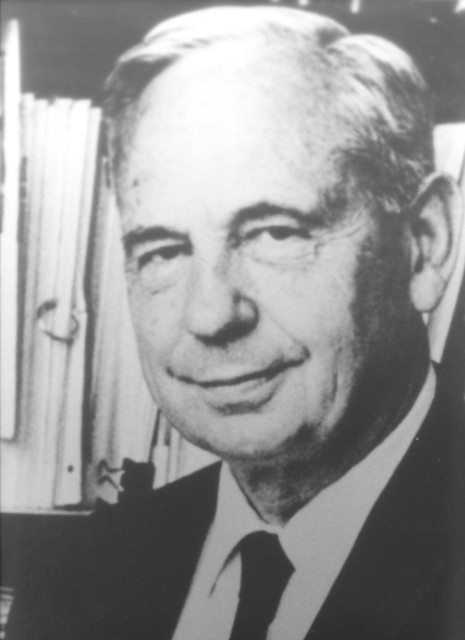Henry Eyring
1901-1981

Eyring was a giant of 20th century physical chemistry. In over 600 scientific papers and 10 books he contributed to many areas of science, but is probably best known for his theory of absolute reaction rates and for the concept of the "activated complex" (transition state) in chemical reactions. The most influential of his co-authored books were "The Theory of Rate Processes" (1941) and "Quantum Chemistry" (1944), but he also published seminal works on the theory of liquids, optical rotation, rate processes in biology and medicine, aging and cancer, anesthesiology and many other areas.
Born to a well-to-do rancher in Colonia Juarez (Chihuahua, Mexico) Eyring was always at home on a horse. He studied mining and metallurgical engineering at the University of Arizona (B.S. 1923, M.S. 1924), then took a Ph.D. in chemistry at the University of California, Berkeley (1927). After brief appointments at Wisconsin, Berlin and Berkeley he joined the Princeton faculty in 1931. In 1946 he moved to the University of Utah (Eyring was a devout Mormon) for the remainder of his career, as Professor of Chemistry and Dean of the Graduate School (1946-66), and later as Distinguished Professor of Chemistry and Metallurgy (1966-81). The chemistry building at Utah is named for him.
Among Eyring's numerous honors were the Peter Debye Award in Physical Chemistry (1964), the Langmuir Award (1967), the Pauling (1969), T. W. Richards (1975), Priestley (1975) and Berzelius (1979) Medals, and the Wolf Prize (1980). Eyring served the profession in many capacities, including President of the ACS (1963) and of the AAAS (1965).
Location in chemistry building:
Basement Floor; West Wing North Wall; Sequence 3
Source:
Professor Poulter, University of Utah